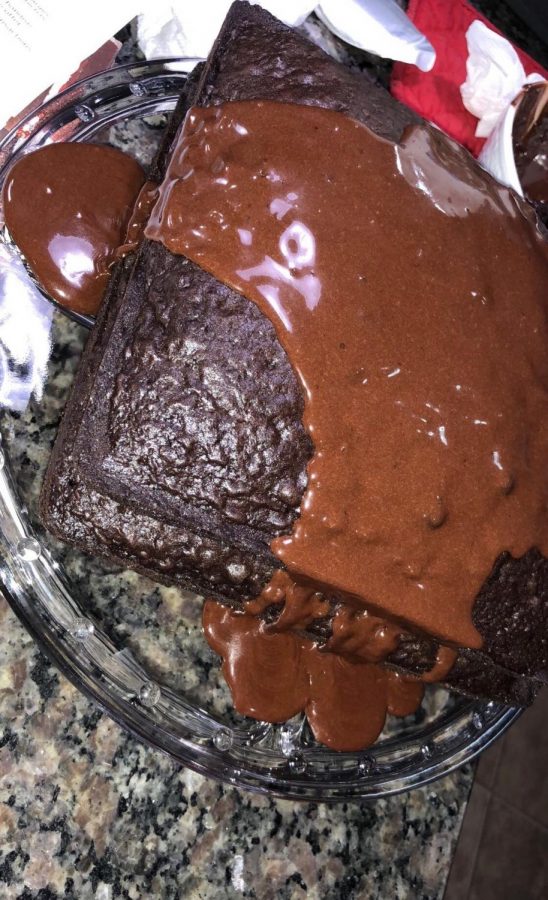Foods Around the World
Bizcocho Dominicano
Glazed with a chocolate icing, Bizcochó Dominicano is a dedicant Dominican cake rich in its chocolate flavor. Senior Adriana Suriel makes this cake from memory which was passed down from her relatives.
May 22, 2018
The Dominican Republic is known for its white-sand beaches, warm water, and tropical weather. This climate allows the country to be the second-largest Caribbean producer of sugarcane, which is one of the nation’s most important commercial crops. The Dominican Republic is currently one of the leading exporters of tropical organic products globally, which includes bananas, cocoa, and apples. As for Dominican cuisine, the most well- known meal is La Bandera. This dish is made with white rice, red beans and served with a stewed meat, fried plantain, and a salad on the side. Yams and plantain are two ingredients that are generally found in Dominican meals and are served with a small portion of meat. Although many spices are used to flavor dishes, foods in the Dominican Republic are not usually spicy.
In the world of Dominican desserts, tropical fruit flavors are a big deal. Guava, a tangy fruit, grow on trees all throughout the island and is used in several recipes. Dominican recipes also take a rather unusual turn regarding ingredients. One dessert in particular is made with red beans stewed with coconut milk, sugar, and cinnamon sticks. As corn is a staple in Dominican cuisine, it can also be prepared as a dessert. Majarete is a silky corn pudding made with condensed pudding and coconut milk. Senior Adriana Suriel said, “My favorite part about Dominican cooking is how authentic it is, and it’s unique because no one really has it written down. It was just passed down through generations, and you learn it and pass it down to your children. It’s something that we can all connect through.” Dominican cuisine depends on memory and precise measurements, especially in making Dominican cakes. Suriel explained, “No one really knows the ‘right way’ to cook Dominican food since there are so many ways to cook it. They all taste the same in a sense, but some people will add a different ingredient than others. It is all made from scratch and memory.”
Bizcochó Dominicano is the basis for making a traditional Dominican cake. Whether it is for a birthday, wedding, or any other occasion, this is a thick cake made for a great number of people. The key ingredient in making these cakes is using Dominican vanilla, which is made differently than vanilla in the United States. Suriel said, “I would say that what makes this cake different is the time it takes and that there are very few ingredients. I’ve always thought that there are not enough, yet it’s such a hard cake to make compared to other cakes I’ve made. It’s the traditional cake to use for all events such as holidays, birthdays, or just any celebration and can serve so many people.” Layering these cakes with several tiers is used to feed a bigger crowd. Adriana Suriel was kind enough to translate this recipe from Spanish so that you can make it too!
- 1 cup unsalted butter (softened)
- 3 cups of sugar
- 6 eggs
- 1 teaspoon of vanilla extract
- 3/4 teaspoon of salt
- 3 cups of sifted all purpose flour
- 1 cup heavy cream
- Add cocoa powder to make chocolate cake
- Preheat oven to 350
- Mix salt and sugar in a separate bowl until white and fluffy
- Add eggs in one at a time and mix after each egg. Add vanilla and mix well.
- Add salt and slowly add flour and mix well
- Add mix to cake pan and bake for an hour
- Use a toothpick and stick it in the cake
- If it comes out clean, then it is ready.












